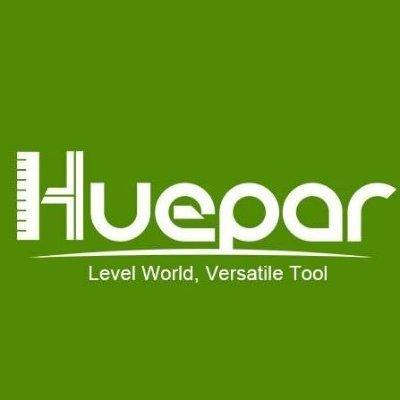What Are 3D Laser Levels and How Do They Work?
Understanding the Technology Behind 3D Laser Levels
3d laser levels are advanced tools that create visible lines on surfaces. These lines are perfectly leveled or plumb, helping in accurate project layouts. They work using a laser diode that emits a beam. This beam passes through an optical device, which shapes it into a line. A level mechanism ensures the laser stays true to horizontal or vertical planes. Some models use pendulums, while others use gyroscopic systems to stay level. These tools are a leap forward, especially in environments where precision is key.

The Components of a 3D Laser Level
A 3D laser level is made up of several key parts. First, you have the housing that protects the inner tech. Inside, there's the laser diode. This is where the laser beam starts. Next comes the leveling mechanism. It keeps the laser straight, even if the tool is on an uneven surface. Then there are the optics. They help shape and direct the laser light. There's also the power source, often a battery. Finally, some models have a receiver. It catches the laser signal over long distances. These parts work together to give you accurate, 3D lines for your projects.
The Science of Laser Level Precision
The precision of 3d laser levels comes from the science behind lasers. Lasers, which stand for Light Amplification by Stimulated Emission of Radiation, are highly focused beams of light. They emit light at a specific wavelength which is then used in 3D laser levels to create extremely accurate and visible lines across surfaces. These levels use gyroscope stabilizers and electronic sensors to ensure the lines remain steady even when they are shifted or set on uneven surfaces. This precision technology allows for error-free measurements that are essential in construction and DIY projects where accuracy is paramount.
Benefits and Applications of 3D Laser Levels in Construction and DIY
Advantages of Using 3D Laser Levels in Construction Projects
3d laser levels bring unmatched precision to construction sites. They allow for quick, accurate alignment of structures. This precision improves project outcomes and saves time. With 3D lasers, workers can project points and lines in all directions. This feature aids in tasks like framing, tiling, and leveling floors. Gone are the days of tedious measurements with rulers or tape measures. These laser levels let builders do more, with less effort and fewer errors. They are vital tools for tasks that demand high accuracy. Also, they simplify complex layout work on job sites. As a result, using a 3D laser level boosts efficiency and can cut down on costly mistakes. It's clear that for modern construction projects, 3D laser levels are invaluable.
Creative Ways to Use 3D Laser Levels for DIY Enthusiasts
3d laser levels are not just for the pros. DIY buffs can use them too. With such a tool, aligning wall tiles is a breeze. You can also hang art at the same height easily. Even for complex jobs, like building a deck, a 3D laser level can guide you. It ensures your foundation is level before you start. These are just some cool uses for the tool. It's a handy aid for a host of DIY projects, big or small.
Comparison: 3D vs. Cross Line and 4D Laser Levels
When choosing a laser level, it's vital to know the differences between 3D, cross line, and 4D models. A 3D laser level boasts precision and can project lines on all surfaces within a room. Cross line lasers, in contrast, emit crossing horizontal and vertical lines. They work well for basic tasks like hanging pictures. As for 4D laser levels, they extend the capabilities of 3D lasers by emitting laser lines that wrap around corners, making them perfect for complex layouts. Understanding these distinctions helps pick the right tool for your project.
Choosing and Using 3D Laser Levels Effectively
What to Look for When Buying a 3D Laser Level
- Accuracy and Range: Pick a laser level with high precision and a range that suits your needs.
- Self-Leveling Feature: Look for models that offer self-leveling capabilities for ease of use.
- Battery Life: Consider the battery life and opt for longer-lasting models to avoid frequent changes.
- Durability: A robust design is essential for withstanding tough work environments.
- Extra Features: Evaluate additional features such as Bluetooth connectivity or a mobile app.
- Warranty and Support: Ensure there is a good warranty and customer support in case of issues.
- Price: Balance cost with features and quality to find a laser level that offers good value.
Best Practices for Setting Up and Using 3D Laser Levels
If you're planning to use a 3D laser level, proper setup is key. Here's how:
- First, find a solid base. A shaky surface can ruin accuracy.
- Make sure the level is calibrated. Check the manufacturer’s guide for how to do this.
- Use the self-leveling feature if available. It speeds up setup and boosts precision.
- If you're outside, pick up a laser detector. This helps you see the laser in bright light.
- Avoid direct sunlight on the laser. It can make the beams hard to see.
- Keep the laser level clean. Dirt on the lens can distort the laser line.
- Learn how to use the locking mechanism. It protects the internals when moving the tool.
- Always double-check measurements. Even the best laser levels can be off with a poor setup.
Follow these steps for a foolproof experience with your 3D laser level.
Maintenance and Safety Tips for Laser Levels
Taking good care of your 3D laser level is key to its longevity. Here are some simple tips:
- Always store your laser level in a padded case. This protects it from knocks.
- Keep the laser glass clean. Use a soft, damp cloth to wipe it without scratching.
- Check for calibration often. If it's off, follow the manufacturer's guide to recalibrate.
- Avoid exposure to extreme weather. Too hot or cold can harm the level's accuracy.
- Handle with care. Dropping it can misalign the lasers and damage internal parts.
- Change the batteries as needed. Low power can make the lasers dim and less precise.
Remember, safety is a priority. Never point the laser directly at eyes, and use caution markers.









